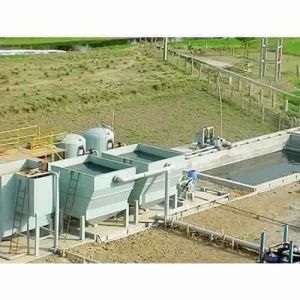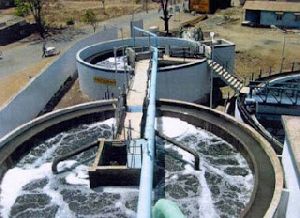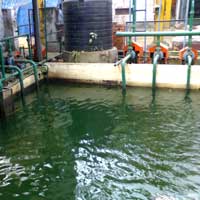
Industrial Effluent Treatment Plant
175,000 - 5,000,000 Per piece
1 Piece (MOQ)

Effluent Treatment Plant
Get Price Quote
We offer a large number of diverse types of Effluent Treatment Plant and Technology having standard quality and high efficiency. These are well appreciated by clients for their high quality standards and Industrial, Commercial and Municipal Effluent Treatment Plants. The products we offer are developed under the supervision of expertise, employing technologically latest machines and tools. Moreover, these treatment plants are tested on various parameters before the final delivery. TREATMENT OF DIFFERENT EFFLUENT VARIETIES: Oil Water Effluent Treatment Service Water Effluent Treatment Coal Handling Plant & Coal Storage Effluent Treatment Sludge Handling System FEATURES: Require less maintenance Simple management Rugged design High grade raw material Operates on both aerobic and anaerobic process Excellent performance
Best Deals from Effluent Treatment Plant

Effluent Treatment Plant
50,000 - 100,000 Per Piece
15 Piece (MOQ)

Effluent Treatment Plant
Get Price Quote
The objectives of biological treatment, some useful definitions, the role of microorganisms in the biological treatment of wastewater, and biological processes used for wastewater treatment are introduced in this section to provide a perspective for the material to be presented in this section. The removal of dissolved particulate carbonaceous BOD and the stabilization of organic matter found in wastewater are accomplished biologically using a variety of microorganisms, principally bacteria. Microorganisms are used to oxidize the dissolved and particulate carbonaceous organic matter into simple end products and additional biomass, as represented by the following equation for the aerobic biological oxidation of organic matter. V1 (organic material) V2O2 +V3NH3 +v4po43 ----------------v5 (new cells) +v6co2+v7h2o Where Vi = the stoichiometric coefficient. In this equation oxygen (O2), ammonia (NH3), and phosphate ( ) are used to represent the nutrients needed for the conversion of the organic matter to simple end products [carbon dioxide (co2) and water] .the term shown over the directional arrow is used to denote the fact that microorganisms are need to carry out the oxidation arrow is used to denote the fact that microorganisms are need to carry out the oxidation process. The term new cell is used to represent the biomass produced as a result of the oxidation of the organic matter. Microorganisms are also used to remove nitrogen and phosphorus in wastewater treatment process .Specific bacteria are capable of oxidizing ammonia to nitrite and nitrate, while other bacteria can reduce the oxidized nitrogen to gaseous nitrogen. For phosphorus removal, biological processes are configured to encourage the growth of bacteria with the ability to take up and store large amounts of inorganic phosphorus. Because the biomass has a specific gravity slightly greater than that of water, the biomass can be removed from the treated liquid by gravity setting. It is important to note that unless the biomass produced from the organic matter is removed on a periodic basis, complete treatment has not been accomplished because the biomass, which itself is organic, will be measured as BOD in the effluent. Without the removal of biomass from the treated liquid, the only treatment achieved is that associated with the bacterial oxidation of a portion of the organic matter originally present. Types of Biological Processes for Wastewater Treatment The principal biological processes used for waste water treatment can be divided into two main categories: suspended growth and attached growth processes. (MBBR, SAFF, ASP, UASB&MBR). The types of microorganisms involved the specific reaction that they perform, the environmental factors that affect their performance, their nutritional needs, and their reaction kinetics. These subjects are considered in the design section and ACSION focus these areas for the overall performance of the plant. ACSION has the technical capability and expertise for the successful design and operation of all these processes to our valuable customer. Need For �ACSION� Advanced Effluent Treatment The need for advanced wastewater treatment is based on a consideration of one or more of the following factors. The need to remove organic matter and total suspended solids beyond what can be accomplished by conventional secondary treatment process to meet more stringent discharge and reuse requirements.The need to remove residual total suspended solids to condition the treated wastewater for more effective disinfection.The need to remove nutrients beyond what can be accomplished by conventional secondary treatment to process to limit eutrophication of sensitive water bodies.The need to remove specific organic (e.g., heavy metals) and organic constituents (e.g., MBTE and NDMA ) to meet more stringent discharge and reuse requirements for both surface water and land based effluent dispersal and for indirect potable reuse applications (e.g., groundwater recharge).The need to remove specific inorganic (e.g., heavy metals, silica) and organic constituents for industrial reuse ((e.g., cooling water, process water, low pressure boiler makeup water, and high-pressure boiler water). With increased scientific knowledge derived from laboratory studies and environmental monitoring concerning the impacts of the residual constituents found in secondary effluent, it is anticipated that many of the methods now classified as advanced will become conventional within the next 5 to 10 years. Compounds containing available nitrogen and phosphorus have received considerable attention since the mid- 1960s. Initially, nitrogen and phosphorus in wastewater discharges became important because of their effects in accelerating eutrophication of lakes and promoting aquatic growths. More recently, nutrient control has become a routine part of treating wastewaters used for the recharge of groundwater supplies. Nitrification of wastewater dischargers is also required in many cases to reduce ammonia toxicity or to lessen the impact on the oxygen resources in flowing streams or estuaries. As a result of the many concerns over nutrients, nutrient removal has become, for all practical purposes, an integral part of conventional wastewater treatment.

Wastewater Treatment Plant
Get Price Quote
Wastewater Treatment Plant, Solar Power System, Reverse Osmosis Plant

Water Treatment Equipment
Get Price Quote
Water Treatment Equipment, Nylon Filter Cartridge, Testing Instruments

Wastewater Treatment Plants
Get Price Quote
Wastewater Treatment Plants, Boilers, Industrial Heaters

water treatment equipments
Get Price Quote
water treatment equipments, Water Treatment Plants, Water Treatment Chemicals

Sequential Batch Reactor
Get Price Quote
Sequential Batch Reactor, Electro Chlorinator, Chlorine Dosing System

Waste Water Treatment Plants
Get Price Quote
Waste Water Treatment Plants

Waste Water Treatment Plant
Get Price Quote
Waste Water Treatment Plant, dust collection systems

PLC Wastewater Treatment Plant
Get Price Quote
PLC Wastewater Treatment Plant

Waste Water Treatment Plants
Get Price Quote
Waste Water Treatment Plants, bag house bag filters, Scrubbers, Cyclones